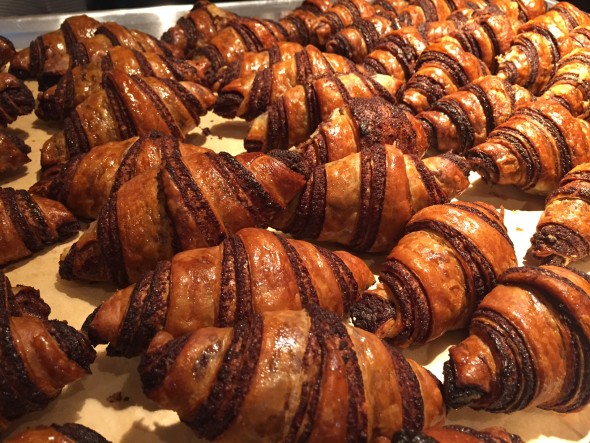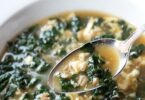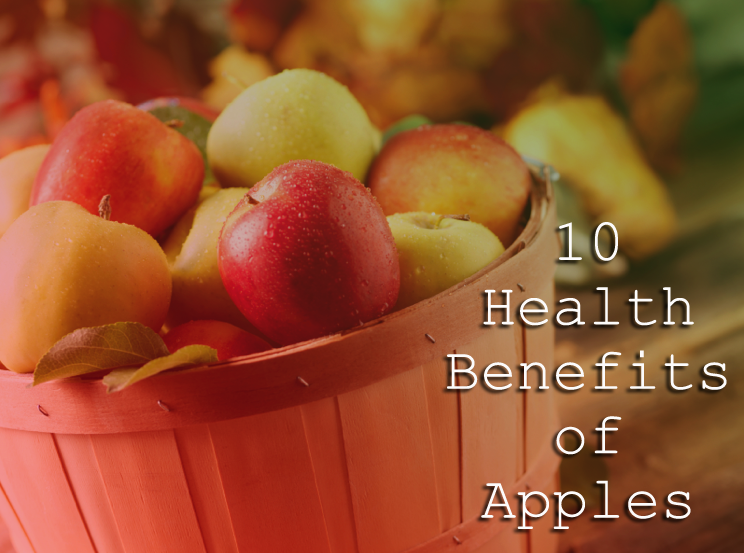The history of rugelach, the sweet traditional Jewish pastry, is a fascinating one.
by Bryce Gruber and Yehudah Jacobs
Why are so many people obsessed with rugelach? This easily found Jewish pastry is basically just some rolled-up dough with different fillings (they vary from community to community), so why are they so addicting?
Like most other sweet treats, it’s the history of rugelach that adds so many more layers of flavor—starting with the name. The name ‘rugelach’ is a mashed-up Yiddish word that basically translates to anything twisted.
If you have a crazy cousin, technically you can start calling him rugelach, too.
“Rog” is the Polish prefix for horn, which describes the traditional shape of the pastry (and if you’re thinking about the more square, dense rugelach you buy at big box retailers, that has a different historical path which we’ll get to in a minute).
If you love this story, join the Luxe Living by TheLuxurySpot.com Facebook group.
The rest of the name traces itself back to varied European pronunciations, with the singular being ‘rugale’ and plural being ‘rugalach.’ How bout that? You just learned something about the Yiddish language on top of your already scheduled carb obsession, which is perfect, because this once Jews-only treat is now a mainstream finding in delis, bakeries, and supermarkets around the world.
“Unlike its cousin, the hamentaschen, which is traditionally eaten on Purim, or its chic French counterpart, the croissant, rugelach can be eaten any time, and with any meal or as a treat with coffee,” explains Rachel C. Weingarten, author of three non-fiction books centering around spirituality, culture, and cuisine.
“No special occasion is needed.”
It’s that casual side of the history of rugelach that helped propel this little pastry treat from Eastern Europe (with deep Ashkenazi roots) to the minds of the snack-obsessed. The pastry was actually created about the same time the croissant was created, and that was in 1683.
In other words, rugelach aren’t some snack fad—biting into a single rugele is biting into hundreds of years of delicious history and heritage. The shape’s history, though, will be surprising to most. Legend claims (and historians back it) that the modern crescent shape was developed just over 300 years as a subtle ‘buzz off’ to the Turks, who already used the crescent shape on their war flags as early as the 16th century.
The Ottoman-Hapsburg wars finally drew to a close in the late 1700s, and the local Jewish leaders in the Austro-Hungarian empire encouraged their communities to channel their anger for the often brutal Ottoman armies in a more artistic way. Rather than using outward, physical aggression, the Jewish community shaped their pastries like the crescents they saw on the Ottoman war flags, and ‘chewed’ them out.
If you love this story, join the Luxe Living by TheLuxurySpot.com Facebook group.
Every time a Jew had a nosh, he or she could sink some teeth into a crescent. Passive aggressive? Maybe, but relatively harmless and certainly a poetic, gourmet approach. While the Ottomans might’ve been expelled, the crescent-shaped rugelach stayed.
The modern day stuff hasn’t changed much in most corners of the world except the USA—something must’ve happened at Ellis Island to change the recipe because in Europe, Israel and beyond the recipe calls for a somewhat light, yeast-raised consistency, while the American counterparts use a dense, cream-cheese based dough that has virtually no rise at all.
When you head to an American bakery for rugelach, you usually find clay-like little squares filled with nuts, cinnamon, chocolate, and other flavors. The original, euro kind though? Airy, dunkable, sweet, and far more similar to the croissant cousin from France.
“Technically, the American version would be termed as a cream cheese dough which in texture is more like a shortbread cookie, while the yeasted version would resemble a danish pastry – light and fluffy,” illustrates Edan Leshnick, pastry chef at Breads Bakery in NYC.
“Today, many versions of the yeasted dough include the process of lamination as well, which will incorporate more butter with a series of folds to create that flaky texture of a croissant.”
And anywhere you see butter, there’s obviously room for a margarine-made version to satiate the non-dairy needs on kosher keepers.
According to The Encyclopedia of Jewish Food by Gil Marks, Americans have converted the traditional rugelach recipe from a yeast rising dough to a yeastless dough based off on cream cheese or sour cream. The Israelis, however, still make it dairy-free.
The long, hard way is the Israeli standard for pastries with kneading and rising making the process significantly more arduous, but vegan-friendly.
When it comes to fillings and coatings, there are also huge differences between American style rugelach and Israeli style, with the former focusing on raspberry jams, apricots, raisins, poppy seeds, and nuts. Israelis, though?
They like to get wild with their fluffier rugelach and use syrupy coatings, rich chocolate, Nutella, cinnamon pastes, pistachio crumbles, and even date spreads. No matter how you cut it, though, rugelach was designed to be a sweet treat. Please, foodies of the world, this is simply not the place to bring your spinach and artichoke flavors.
For rugelach newbies: try one or two on the side of your morning latte, as a dessert, or heated for just a minute or two in a toaster oven to give a warm, gooey texture.










LOL Gentle us all with really rich rugelach! Fat, happy, not mobile.